
Sandwiched between Brazil and Peru, Bolivia is a well-hidden jewel, drawing much less attention when compared with its other South American neighbors. Whether you are a backpacker or simply a sightseer, this landlocked country offers a myriad of things to see and do, including outer space landscapes, a remarkable cuisine and exceedingly friendly people, all of which are accompanied by intriguing culture and countless ancestral traditions. Hence, for those of you who wish to experience unfiltered and authentic cultural practices while traveling, Bolivia should undoubtedly ranks high on your bucket list.
Let me be perfectly clear, Bolivia’s de-facto capital city couldn’t be more loosely related to its name “La Paz” (peace in Spanish), as its street scenery resembles a hectic Asian city, like Ho Chi Min City, rather than a typical South American metropolis.
The constant swarms of minivans, chaotic vibes and informal economy are all everyday parcel of this vibrant city, and while most if not all major cities around the world experience some sort of traffic gems and noisy commotions, I could never forget La Paz because of this. Whereas many visitors might regard the hustle and bustle as an unpleasant nuisance, I would argue that exploring the city and its surroundings for a couple of days is a worthy experience not to be missed, albeit extra patience is required.
Nestled on the canyon along the Choqueyapu River at more than 4,000 meters above sea-level, La Paz serves as a transit point for many travelers, as most international visitors enter or exit the country through the city’s El Alto International Airport.
However, as I’ve already said, this city is a legitimate destination by its own right rather than a one night stopover before venturing out into the countryside. Surprisingly, La-Paz offers numerous unusual places to explore, preferably by getting lost in the longest public cable car system in the world, blessed with stunning views of its skyline on the backdrop of the snowy mountain peaks around.
Shopping lovers will find Sagarnaga street very appealing, it’s not only the best place in town to purchase traditional handicrafts and souvenirs, but also a cultural epicenter nationwide, where hawkers sell dried llama fetuses, local herbs and all sorts of things Bolivians regard as part of their heritage.
There isn’t probably a better way to complement La-Paz’s rawness than visiting its historic buildings at Plaza Murrillo and strolling down Calle Jaén, a charming cobblestone street, famous for its colorful colonial architecture.
You’ve obviously guessed by now that La-Paz can be a bit overwhelming, thereby a day-trip to one of the city’s surrounding parks and natural sites can contrast that, refilling your lungs with fresh mountainous air.
Of the many incredible sites visitable on a sunny day are La Muela del Diablo hiking trail, Valle de la Luna and the Tiwanaku ruins. If you don’t want to spend lengthy periods of time in a bus, you can alternatively take the cable car to see one of the several markets in the chaotic suburb of El Alto.
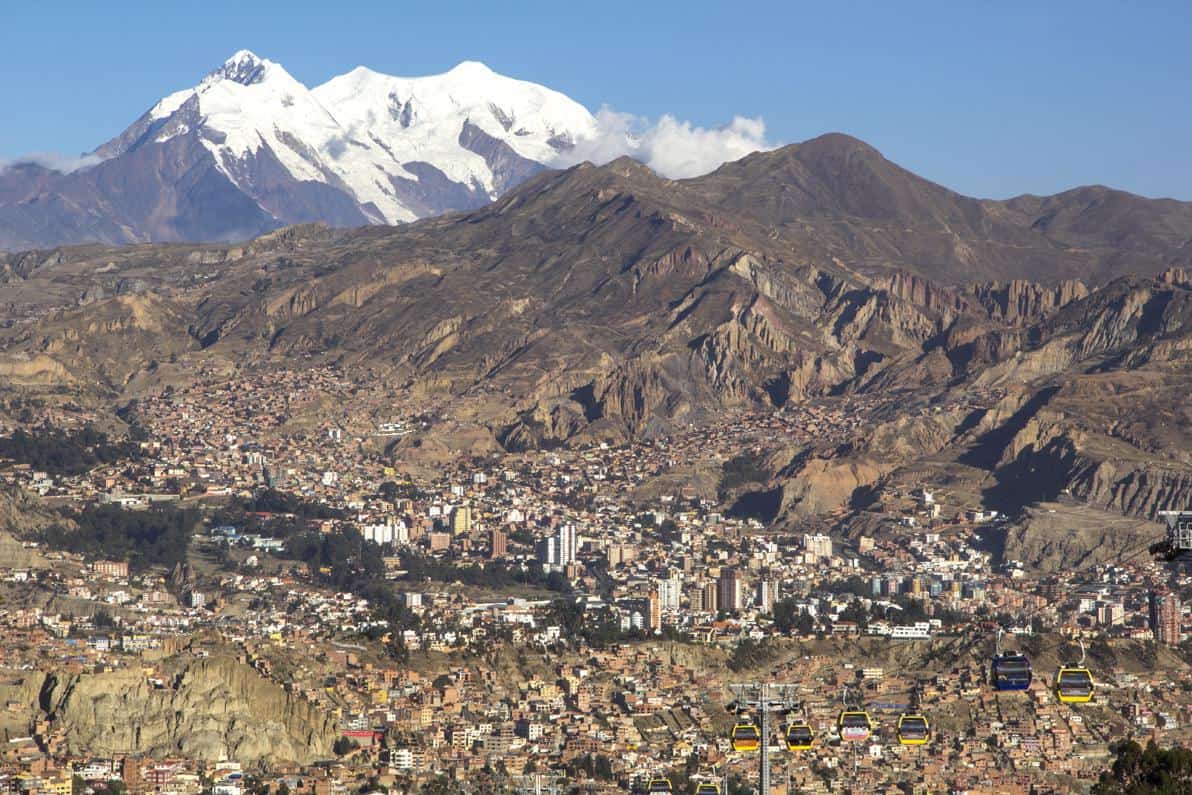
A panoramic view of La Paz with the Illimani snowy peaks on the background
photography by: Marco Rof
The Bolivian version of Copacabana might not offer the thriving nightlife and sandy beaches of its Brazilian counterpart, yet what it lacks in recreational activities it surely makes up by being along the Titicaca Lake, the highest one in the world with its surface standing at staggering elevation of 3,812 meters above sea level.
Reachable by roughly five hours bus ride from La Paz, Copacabana is the perfect stop for travelers on their way to Peru by land, and who desperately seek some calm after visiting the hectic maze streets of La-Paz.
To be honest, the town of Copacabana is fairly small and dull with not much to do besides relaxing and enjoying its peaceful atmosphere, best reflected by its natural surroundings. Hence, perhaps the best way to spend your time here is by having a beer in one of the town lakefront’s several terraces, or alternatively hiking to the El Cerro del Calvario viewpoint where a breathtaking sunset awaits you.
Whatever you ultimately opt to do during your time in town, don’t skip the renowned local cuisine and its endless array of scrumptious culinary bites, most notably the traditional Bolivian quinoa soup.
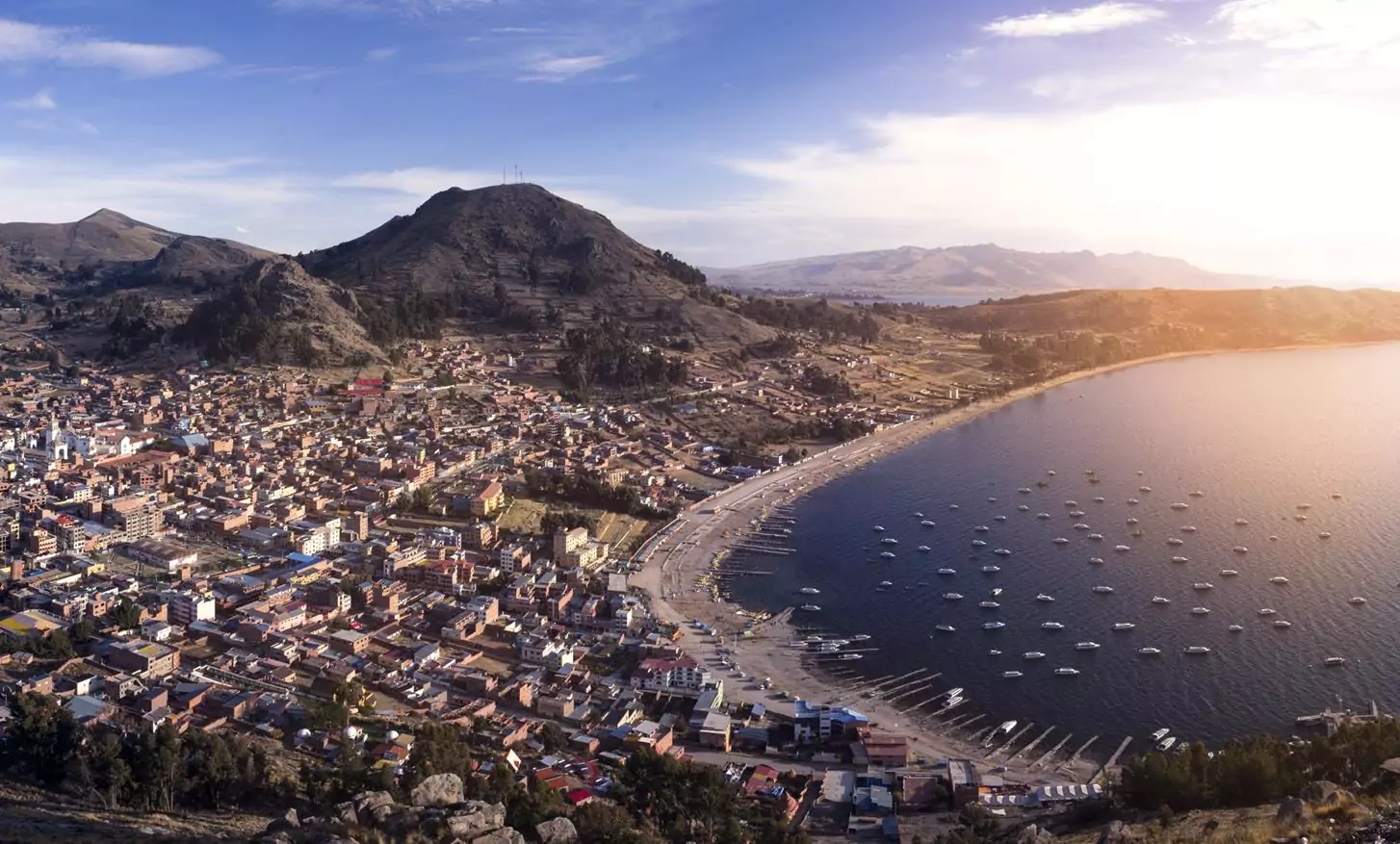
A golden sunset over Copacabana and the Titicaca lake, as viewed from the El Cerro del Calvario viewpoint
photography by: Marco Rof
Titicaca Lake’s largest island, Isla del sol (directly translated as the Island of Sun) is not only home to over 800 farming households and roaming llamas, but also one of the most sacred places according to the local Bolivian traditions.
After wandering around for two hours or more, you might have a sense as if you are in the middle of the ocean, whether it’s the vibe, magnetism or some sort of energy, this speck of land is among the world’s most unique islands. As a matter of a fact, since ancient times, the Titicaca lake was one of the most prominent spiritual centers in the Andean region, evidently, according to the Incan cosmogony, the island is where one of three continental energy points are located.
It’s up for you to decide if this story is only a fictional legend or a real electro-magnetic focal point based on scientific assumption, whatever the answer might be, it only adds up to Isla del Sol’s enigmatic character.
The best way to experience the island is by hiking around the farming terraces, where you’ll come across a mind-boggling panoramic view of Lake Titicaca, while also enduring the icy strong winds or the excruciating sun.
For the ones of you who truly wish to fully experience the island, I would suggest to stay at the island for at least one night, preferably at a homestay. I won’t pretend that Isla del Sol has a lot things to do beyond the realm of hiking and gazing at its remarkable geographical features, yet sometimes it’s more than vital to slow down the pace of life and reconnect with mother nature, and there isn’t a better place to do so than Isla del Sol.

A Cholita working on her farming land in Isla del Sol, while the calm waters of the Titicaca Lake gently reach the shore.
photography by: Marco Rof
It won’t be an exaggeration to claim that the bulk of people who never visited Bolivia, probably believe that its only tourist attraction are the alien white plains of Uyuni salt desert. Given its popularity among foreigners, some of you might consider skipping it due to its over touristy reputation, yet even if you dislike mainstream attractions, a tour to Uyuni is still a must-do, simply because there isn’t any similar place worldwide that parallels its sheer magnificence.
“El Salar de Uyuni” (the Uyuni Salt Flats) is the largest salt flats on earth. Located in the southern part of the country, it stretches alongside the surreal Eduardo Avaroa Andean Fauna National Reserve.
Dominated by a Mars-like landscape, active volcanoes, steamy hot springs and geysers, red lakes flocked by thousands of flamingos, and strikingly colorful mountains, Uyuni is still most famous for its iconic expanse of white flat land, merging perfectly with the sky. Nevertheless, I would argue that its real highlight starts when the sun goes down, during which the Milky Way Galaxy emerges at its full glory, as millions of bright stars light the freezing night sky.
The only real feasible way of exploring this natural jewel is by getting a tour, either starting in Tupiza, which is considerably more expensive, or from the town of Uyuni, vastly considered as the most common option. Since Uyuni and its surroundings are abundant with stunning sites to explore, I warmly advise taking the longest tour (a duration of 3 days).
During the high-season between January to March, it’s necessary to book your trip well in advance, at least three weeks prior to your to visit, whereas at off season, when the salt flats are dry and non-reflective, it’s even possible to register at 8:00AM, two hours before the intended tour departs.
Take note that it’s absolutely indispensable to double-check and see the 4X4 vehicle by yourself, as it would probably save a lot of frustration and lost time by avoiding an inevitable mechanical malfunction. Lastly, if you wish to avert a headache when looking for the right agency to book at, two tour operators I can safely recommend are Esmeralda Tours or Los Salares Tours.

The Outer space landscape with flocks of flamingos at the Laguna Colorada, part of the Eduardo Avaroa Andean Fauna National Reserve
photography by: Marco Rof
If you ultimately decide to visit Uyuni salt flats, it would be an absolute crime to skip the charming towns of Sucre and Potosi, offering an authentic glimpse to Bolivia’s cultural legacy.
Well known for its Colonial whitish buildings topped by red-tiled roofs, Sucre is one of the most beautiful cities in Bolivia, brimming with European style streets and laid-back atmosphere. You can start your visit by strolling around the Plaza 25 de Mayo, followed by aweing the Cathedral and the Oratorio de San Felipe Neri, where you’ll also come across a breathtaking view of Sucre. Alternatively, you can also go to the La Recoleta viewpoint, probably the perfect spot to gaze at city during sunsets.
Roughly 3-hour drive from Sucre is the small mining town of Potosí, a charming place that provides a glance into the daily lives of miners and the mining industry. Interestingly, the miners keep an old-days tradition of handing out offerings to a cave-dwelling demon known as El Tío or the lord of the underworld. Tobacco products, bundles of coca leaves and other gifts are placed around small statues of semi-goat figures who represent the evil spirit.
If you wish to closely experience this facet of townscape, few tour operators offer an organized tour where you’ll have a chance exploring this intriguing heritage.
In case you prefer a more relaxing option, take a public bus to Tarapava hot springs, where a warm lagoon hidden in the Bolivian Altiplano bestows an ambience of tranquility.
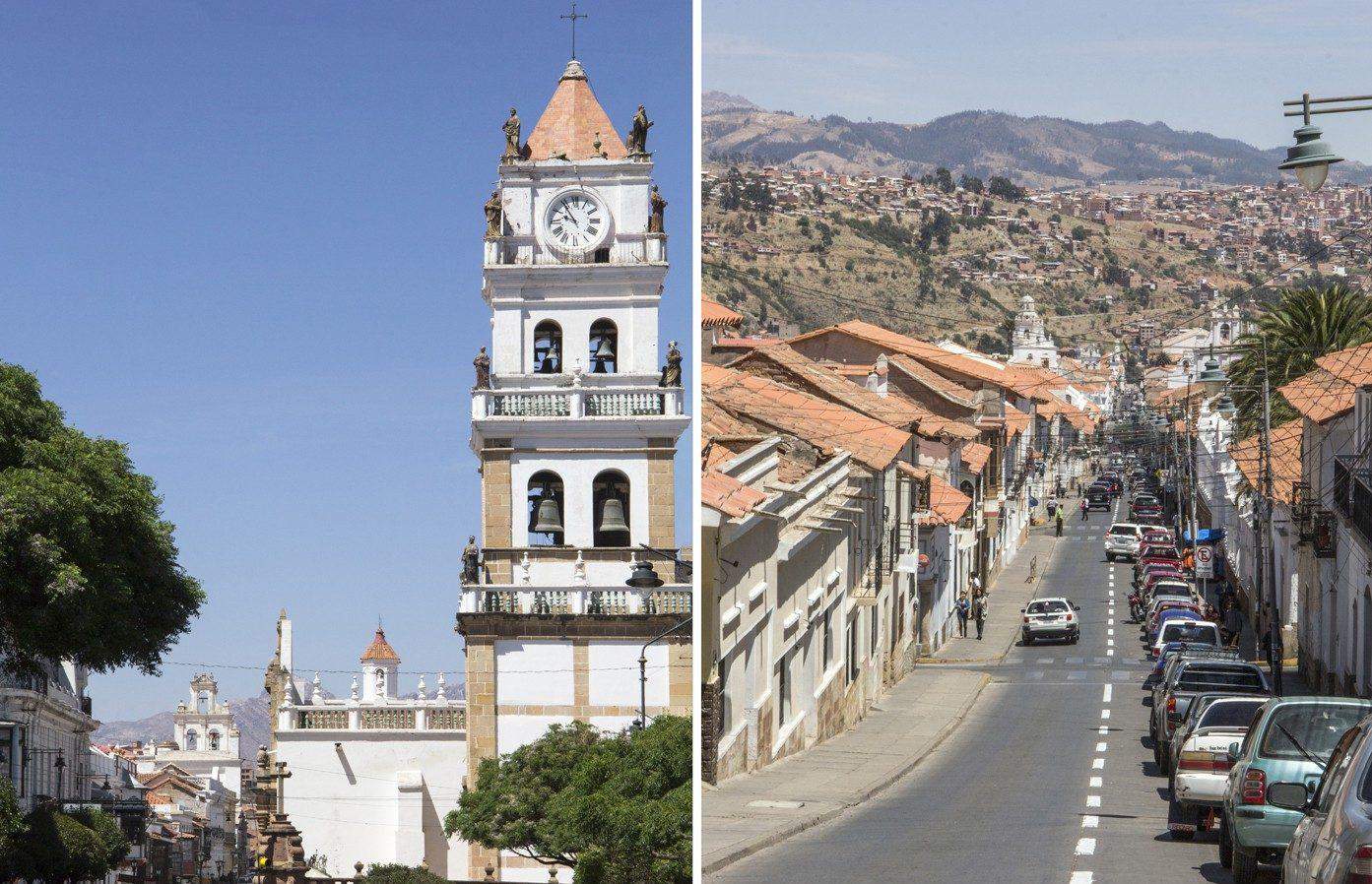
The Metropolitan Cathedral of Sucre and the city’s white iconic streets
photography by: Marco Rof
There is a broad misconception that the Amazon rainforest exists on the territory of Brazil, yet the world lungs, as it’s often referred to, encompasses far more countries, including Peru, Venezuela and even Bolivia.
If you seek an ultra-natural experience while in Bolivia, then take the extra lengthy bus ride or fly from La Paz to Rurrenabaque, or Rurre as it’s locally known.
Besides being the main point where travelers start their journey into the Bolivian Amazon jungle, Rurre is also a charming riverside town flocked by many backpackers who look for a reconnection with nature.
From there, you’ll have plenty of options to experience El Amazonas, including two or three day tours, some of which can be organized as private. Once you are surrounded by nothing but the green Amazonian vastness, almost any sign of modernity is gone, replaced by an incalculable number of giant trees teeming with incredibly diverse wildlife, most notably the perpetual chirps of exotic birds, while if you opt staying overnight in a hut by the river, you’ll probably overhear the crocodiles romping in the water.
Take note that any tour deep into the jungle entails enduring high humidity, insects’ bites and long-winded hikes, thus a better suited tour, like laid back wildlife spotting for easy goers is also available, just ask any travel agency at Rurre.
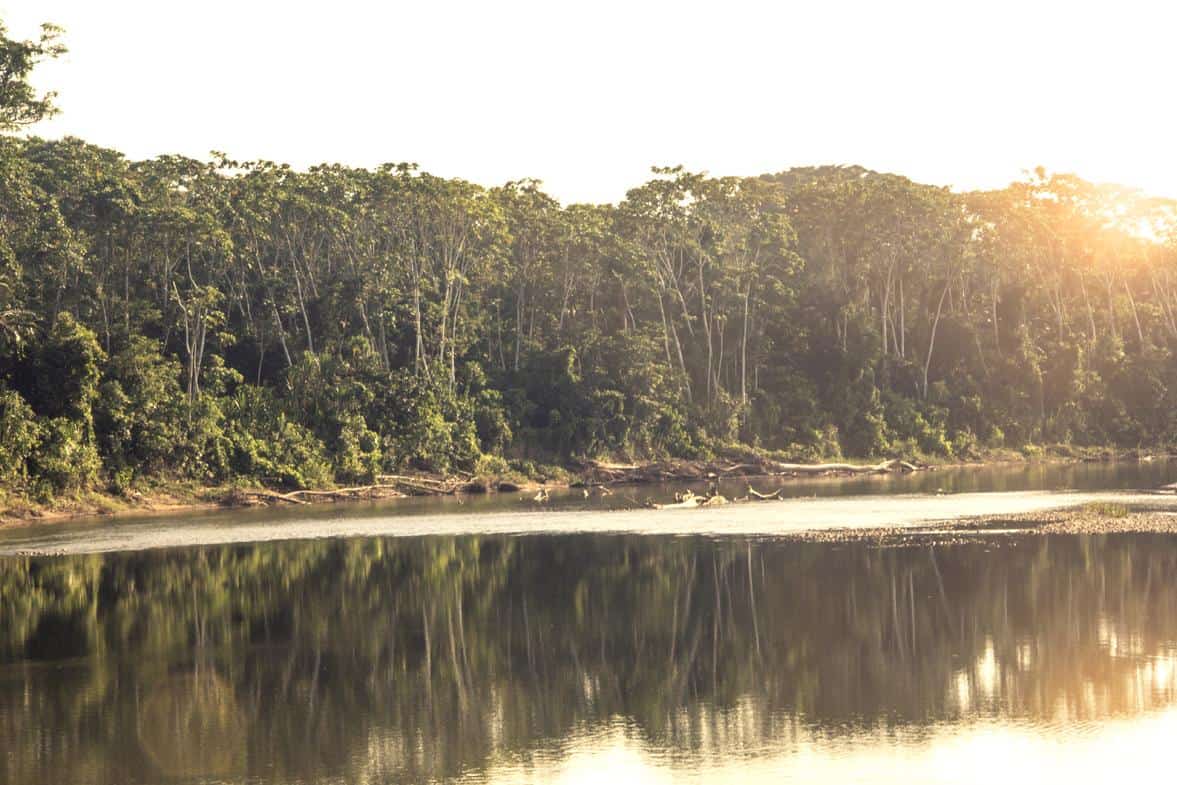
The morning sunbeams over the Amazon jungle as seen from the base camp
photography by: Marco Rof
I’m a young passionate backpacking photographer who had the opportunity to visit and document the local culture and natural highlights at over 35 countries in all continents, except for Antarctica. I also lived in Switzerland, Australia and Samoa while traveling to many other countries such as Iceland, Myanmar and Vanuatu.
I enjoy solo travelling in under-the-radar countries, as I’m looking for the hidden attractions of every town or city I visit. My prime goal when travelling is experiencing the local culture by creating genuine bonds with local people. After completing my master’s degree in marine biology and ecology, I’m currently looking forward to carry on travelling while taking part in the conservation efforts to save the coral reefs all over the world.
Marco’s personal Instagram page
Marco Rof Photograpy Instagram page
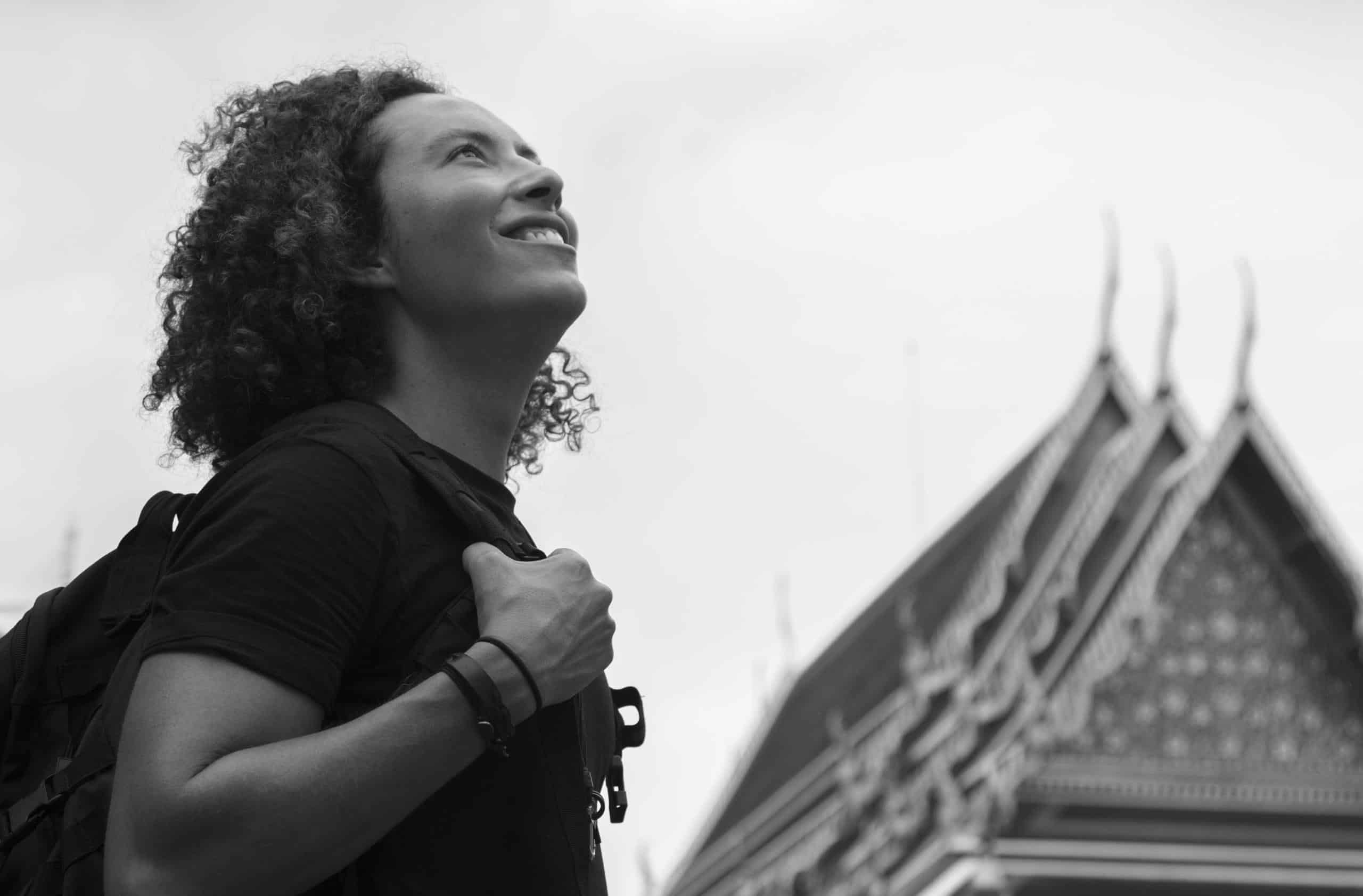
photography by: Marco Rof